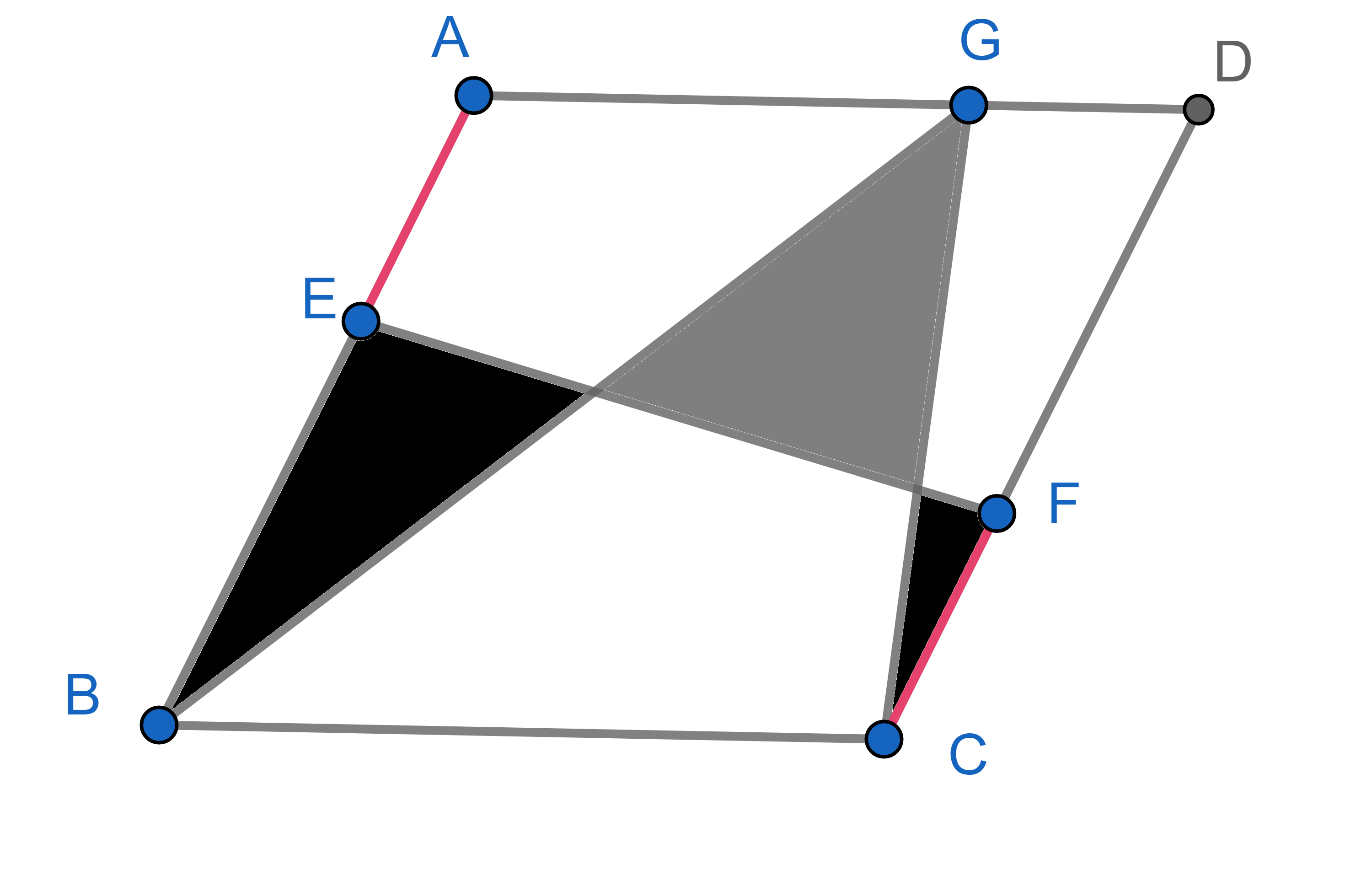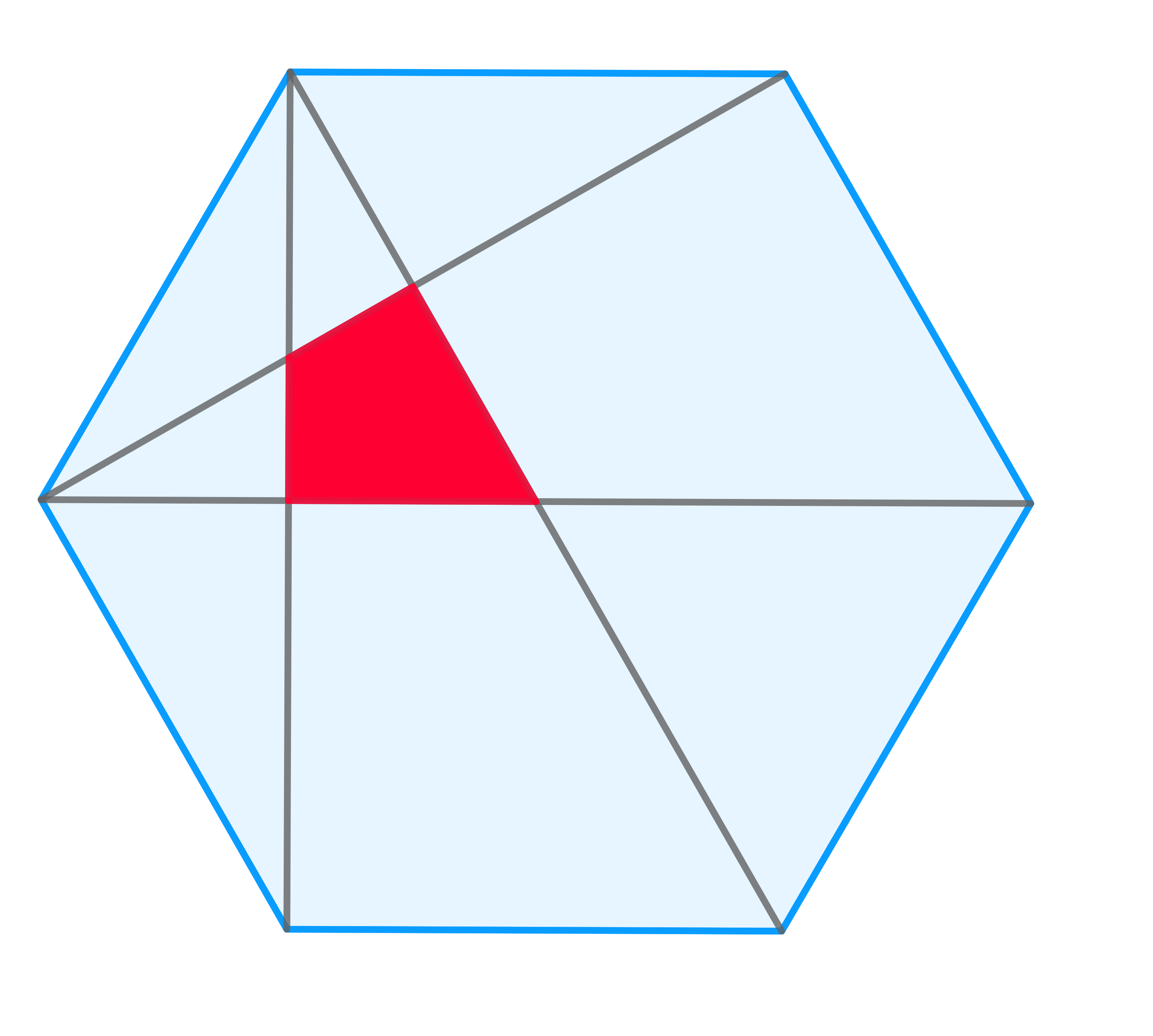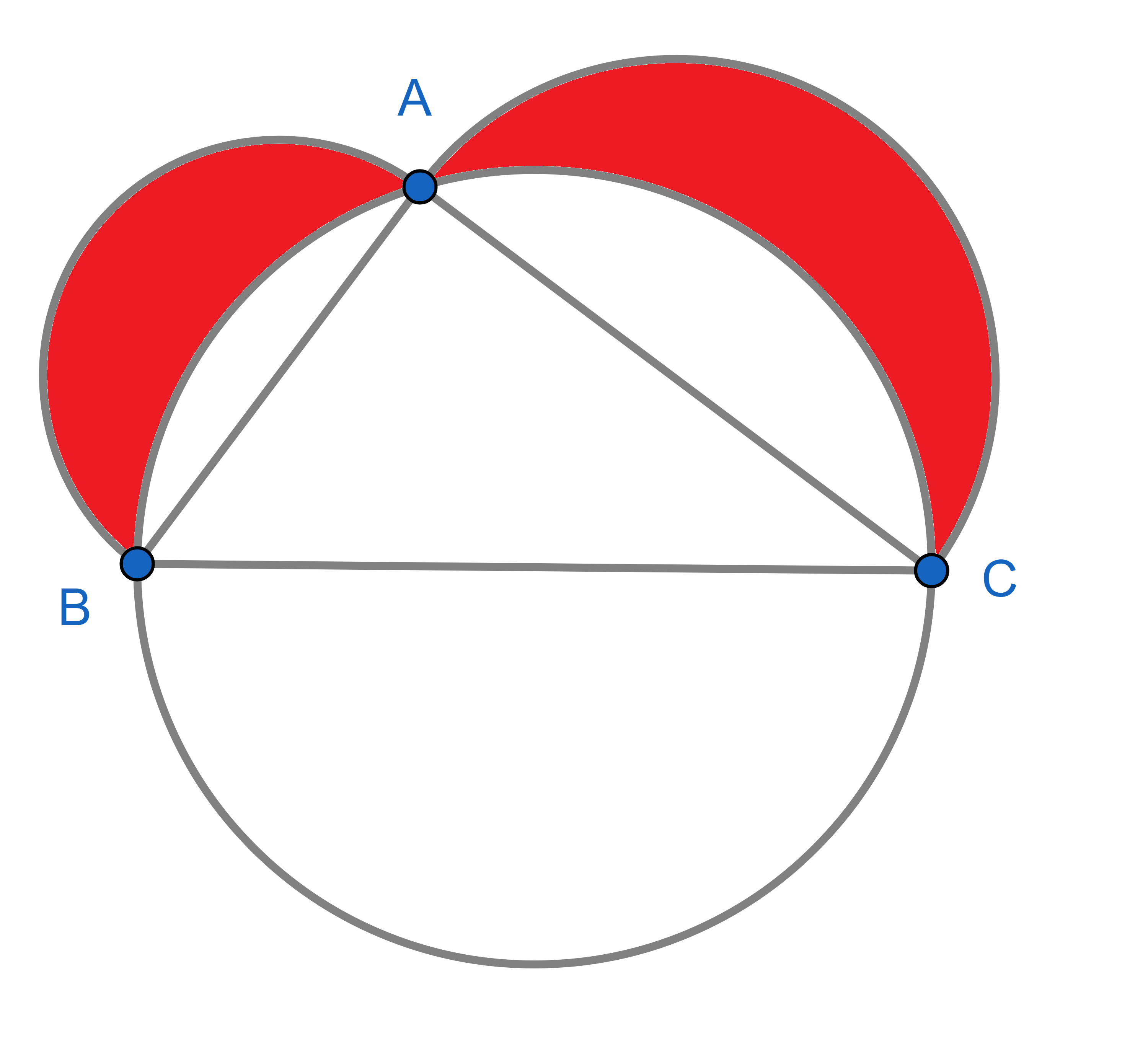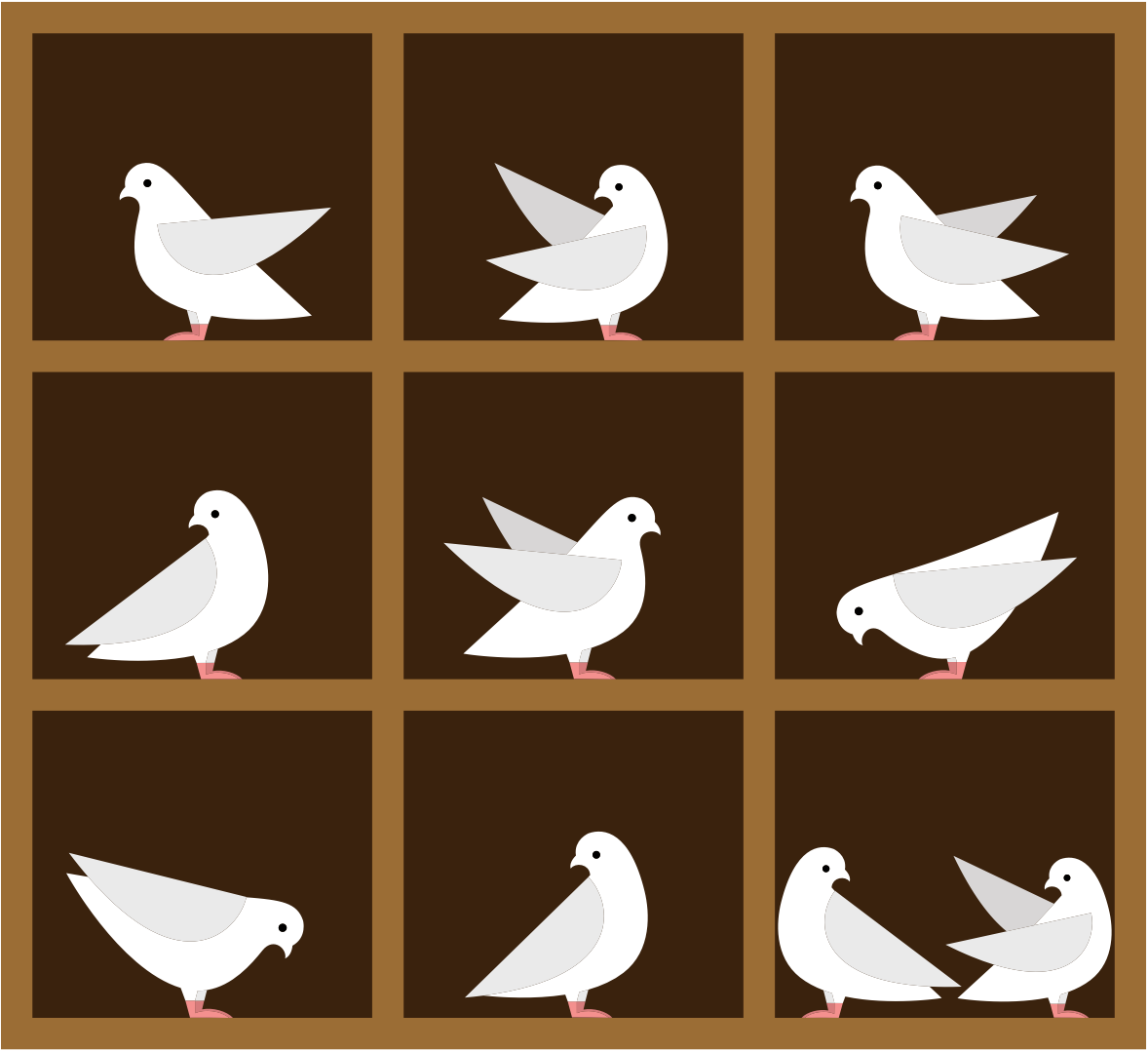Problems
A circle is inscribed in a square, and another square is inscribed in the circle. Which area is larger, the blue or the orange one?

In a square, the midpoints of its sides were marked and connected to the vertices of the square. There is another square formed in the centre. The side length of the large square is \(10\). Find the area of the smaller square. (That is, the red one)

In a parallelogram \(ABCD\), point \(E\) belongs to the side \(AB\), point \(F\) belongs to the side \(CD\) and point \(G\) belongs to the side \(AD\). We know that the marked red segments \(AE\) and \(CF\) have equal lengths. Prove that the total grey area is equal to the total black area.

In a regular hexagon of area \(72\), some diagonals were drawn. Find the area of the red region.

We have a triangle \(\triangle ABC\) with side lengths \(|AB|=3\), \(|AC|=4\) and angle \(\angle BAC=90^{\circ}\). A circle is drawn with side \(BC\) as diameter, and two semicircles are drawn with sides \(AB\) and \(AC\) as diameters. Find the area of the red part.

Today we will be solving problems using the Pigeonhole Principle. What is it? Simply put, suppose we are asked to put pigeons inside pigeonholes, but we have more pigeons that pigeonholes. No matter how we try to do it, there will be a pigeonhole with at least two pigeons. For example, consider the following picture, where we have \(10\) pigeons but only \(9\) pigeonholes:

No matter how hard we try to arrange the pigeons, it will be
impossible to fit at most \(1\) pigeon
in each pigeonhole! Here is a way to see why: suppose that in each
pigeonhole there was at most \(1\)
pigeon. Since we have \(9\)
pigeonholes, this means we have at most \(1\times 9=9\) pigeons in total, but this is
can’t be true, because we started with \(10\) pigeons!
By pigeonhole we can mean any container, and by pigeon we can mean any
object that we want to place inside the containers. This is a simple but
very powerful idea, and today we will learn how to use it to solve some
difficult problems! Let’s start by seeing a simple example. Can you see
what the pigeonholes and the pigeons should be?
There are 8 students in an online chess club. Show that some two of them were born on the same day of the week.
Ramesh has an infinite number of red, blue and green socks in his drawer. How many socks does he need to pick from the drawer at random to guarantee he will have at least one pair of socks of one colour?
There are \(6\) people playing a game online together. Among any \(3\) people at least \(2\) people know each other. Show that there is a group of \(3\) people that all know each other.
On a certain planet the time zones can only differ by a multiple of \(1\) hour and their day is divided into hours in the same way Earth’s day is divided into hours. Show that if we pick \(25\) cities on that planet, some two cities will have the same local time.